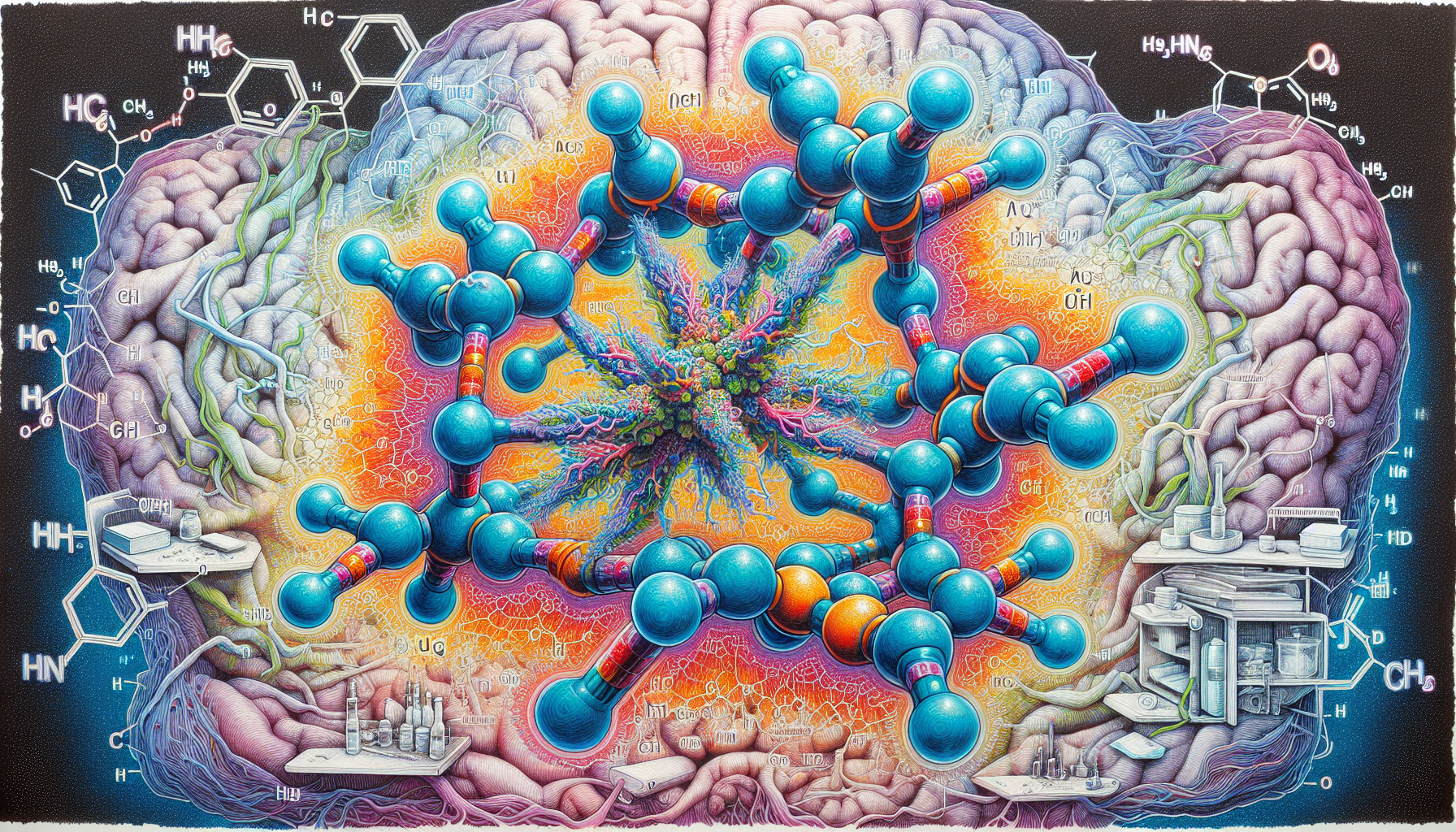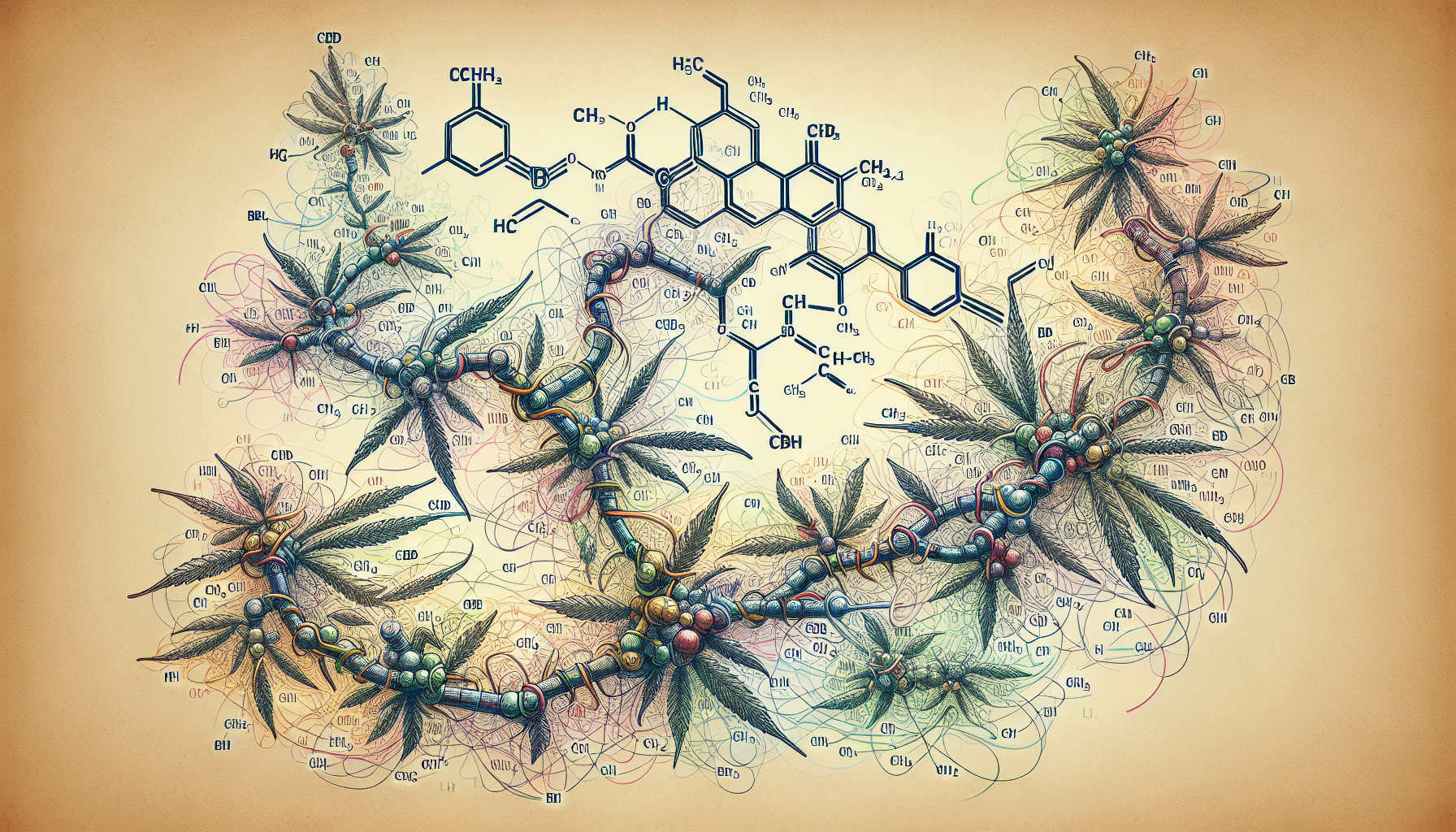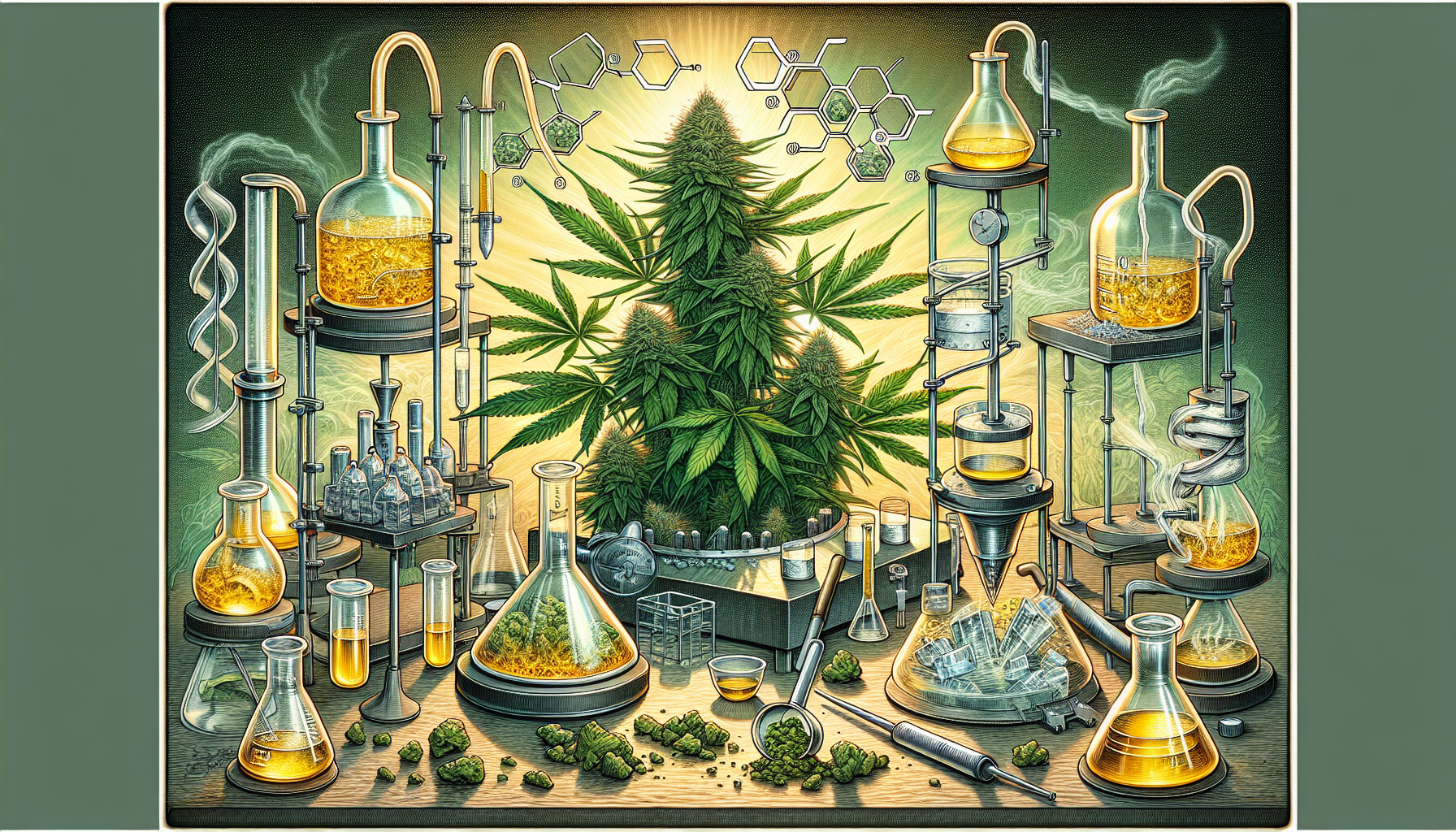Buy THCJD
THCJD: A powerful cannabinoid and its effects
THCJD is a cannabinoid known for its powerful psychoactive effects. In this article, you'll learn what THCJD is, how it works, and how it differs from other cannabinoids. We'll cover the chemical structure, potential therapeutic uses, and legal aspects of THCJD.
The most important things at a glance
-
THCJD is a psychoactive cannabinoid with a longer alkyl side chain of eight carbon atoms, which results in more intense effects compared to THC.
-
The interaction of THCJD with the endocannabinoid system, particularly at the CB1 receptors, results in powerful psychoactive effects that can cause relaxation, euphoria, and possibly negative side effects such as anxiety.
-
The legal status of THCJD varies around the world and may change in the future as different forms of production and consumption, such as vaping and edible products, increase interest in THCJD.
What is THCJD?

THCJD, or tetrahydrocannabioctyl, is a psychoactive cannabinoid that is similar in structure to the well-known THC, but has more intense effects. The chemical structure of thc jd includes a carbon chain of eight carbon atoms, which distinguishes it from THC, which has only five carbon atoms in its side chain.
This longer carbon chain gives THCJD unique properties that make it particularly interesting. It is produced both in the cannabis plant and synthetically and could play an important role in the medical and therapeutic use of cannabinoids in the future.
Chemical structure and properties of THCJD

The chemical structure of THCJD is remarkable. Compared to other cannabinoids, THCJD has the longest alkyl side chain with eight carbon atoms. This longer octyl chain makes THCJD more lipophilic, which makes it easier for it to cross the blood-brain barrier and allows for stronger binding to the CB1 receptors.
The potency of THCJD increases with the length of the alkyl side chain, resulting in stronger psychoactive effects. This property is attracting a lot of interest in the scientific community as it forms the basis for the more intense effects of THCJD compared to other cannabinoids.
Compared to delta-9-THC, which has a side chain three carbon atoms shorter, THCJD shows increased lipophilicity and potency. This makes it a particularly interesting substance for further research and potential therapeutic applications.
Effect of THCJD on the endocannabinoid system
THCJD interacts with the endocannabinoid system. It acts specifically on the CB1 and CB2 receptors. This interaction is particularly strong due to the longer, lipophilic structure of THCJD, which leads to enhanced psychoactive effects. Cannabinoids are an important group of compounds that also interact with the endocannabinoid system.
This stronger binding to the CB1 receptors can lead to altered perception and intense psychoactive effects and their consequences. These effects include various effects that are described in more detail below.
Psychoactive effects
The psychoactive effects of THCJD are often described as more intense and long-lasting than those of THC. Users often report euphoria, deep relaxation, and improved sleep quality. These effects usually begin within minutes to an hour after consumption and can last for about one to four hours.
However, it is important to note that high doses of THCJD can increase the risk of anxiety and paranoia. Compared to THCB and THCV, which have milder psychoactive effects, THCJD exhibits stronger psychotropic effects due to its longer alkyl side chain.
Anti-inflammatory and analgesic effects
THCJD may play a significant role in treating inflammation and pain. Its specific properties and longer alkyl side chain affect interactions with certain receptors in the body, contributing to its anti-inflammatory and analgesic potentials.
Calming and anti-anxiety effects
The calming effects of THCJD and the effects of THCJD are also notable. It can help with insomnia and helps reduce anxiety and stress, albeit only in the short term.
Additionally, it can accentuate hunger and produce calming effects, making it a versatile substance.
Production and Isolation of THCJD

THCJD occurs both naturally in the cannabis plant and is produced synthetically. In nature, THCJD is found in very low concentrations, about 1% of the total cannabinoids. Synthetic production occurs by converting CBD isolate, making THCJD a semi-synthetic molecule.
The synthetic production of THCJD is done in laboratories and is a process derived from other cannabinoids. This method allows for a controlled and efficient production of THCJD for various applications.
Natural extraction
The natural extraction of THCJD mainly uses solvents such as carbon dioxide and ethanol. Despite its low concentration in the cannabis plant, natural extraction is a crucial step in the extraction process.
Synthetic conversion
The chemical conversion of THCJD often occurs through isomerization, a process that allows different cannabinoids to be produced from CBD.
This provides an efficient way to produce THCJD in larger quantities.
Legal status of THCJD worldwide

The legal status of THCJD varies greatly from country to country. In many countries, the legal framework for THCJD is still unclear, leading to different interpretations and applications of the law. Some countries have recognized THCJD as a legal substance, while others exercise strict control over it.
The future regulation of THCJD may change, especially as new scientific evidence about its safety and efficacy is published, making it especially important for users and market players to stay informed.
Risks and side effects of THCJD
As with many psychoactive substances, THCJD has risks and side effects. Possible short-term side effects include dizziness, nausea and paranoia. The intensity of these side effects can vary depending on the dose, method of consumption and individual metabolism.
Due to the lack of studies, the side effects of THCJD are not yet fully understood, which requires controlled and cautious use. Users should start with a low dose and avoid taking THCJD while actively working or concentrating.
Short-term side effects
Short-term side effects of THCJD include anxiety, paranoia, and confusion. These side effects can occur especially at high doses and should be taken seriously.
Edible THCJD products have a slower onset of effects, allowing for controlled dosing and reducing the risk of overdose.
Long-term risks
The long-term risks of THCJD are still little researched and represent a considerable uncertainty. It is possible that other, as yet undiscovered unpleasant side effects may occur, especially with long-term use.
Some studies suggest that long-term use of THCJD may increase psychiatric disorders. The specific molecular structure of THCJD is crucial to the way it is metabolized in the body.
Available products with THCJD

The market offers a variety of products containing THCJD. These products include:
-
vape products
-
edible products
-
flowers
-
pre-rolls
The majority of these products are made from CBD through isomerization processes in the laboratory.
THCJD products are relatively new to the market and offer various applications in the health and wellness industry, making them an interesting option for different consumers.
vape products
Vape products containing THCJD come in the form of disposable e-cigarettes and vape pens. These offer a discreet and convenient method of consumption and are available in a variety of flavors.
THCJD vape pens typically offer a USB-C charging option for convenient recharging, making them a practical choice for on-the-go use.
Edible products
Gummies containing THCJD are a popular form of consumption, often available in a variety of flavors. Edible products containing THCJD are popular with users because of their tasty delivery method.
Tinctures containing THCJD can be placed directly under the tongue for a quick effect, providing an alternative method of consumption for those who do not prefer vape products.
flowers and pre-rolls
THCJD is also available in flower form that can be smoked or vaporized. Pre-rolled joints containing jd THCJD offer a convenient method for immediate consumption without preparation.
Comparison of THCJD with other cannabinoids
THCJD has a longer alkyl side chain than THC, potentially increasing its potency. These differences in molecular structure affect the effects and side effects of both substances.
Compared to THC, THCJD has more pronounced side effects, which is due to the differences in their chemical structure. The effects of THCJD vary in intensity. This variation depends on the dose, method of consumption, metabolism and sensitivity of the consumer.
THC vs. THCJD
THC has a five-carbon side chain, while THCJD has an eight-carbon side chain. This longer side chain gives THCJD greater potency compared to THC.
THCJD may produce less psychoactive effects than THC at lower doses, making it more appealing to users with a lower tolerance.
THCB and THCV
THCJD's psychoactive effects are described as more intense and long-lasting compared to THCB and THCV. While THCB has a four-carbon side chain and produces mild psychoactive effects, THCV has a three-carbon side chain and exhibits little to no psychoactive effects in low doses. These differences in chemical structure directly affect the potency and type of psychoactive effects.
The medicinal uses of THCJD, THCB and THCV all cover important areas such as pain management and appetite enhancement, but with different potencies and specific uses. Although they have many overlapping effects, they differ in their potency and specific uses, making each unique.
Summary
THCJD is a fascinating cannabinoid with unique chemical properties and intense effects. Its longer alkyl side chain makes it more potent and lipophilic than other cannabinoids such as THC, resulting in stronger psychoactive effects. These properties make THCJD an interesting research subject with potential medical applications, especially in pain and inflammation treatment.
The legal status of THCJD varies around the world, and despite the potential benefits, there are also risks and side effects to consider. From vape products to edibles and flower, the market offers a variety of consumption options. THCJD stands in a unique light when compared to other cannabinoids such as THC, THCB, and THCV, making it attractive to different user groups.
Frequently Asked Questions
What is THCJD?
THCJD, also known as tetrahydrocannabioctyl, is a potent psychoactive cannabinoid with a longer carbon chain than THC, resulting in more intense effects.
How is THCJD different from THC?
THCJD differs from THC in having an eight-carbon side chain compared to THC's five carbon atoms, resulting in higher lipophilicity and stronger psychoactive effects.
What short-term side effects can THCJD cause?
THCJD can cause short-term side effects such as anxiety, paranoia and confusion, with the intensity depending on the dose and method of consumption.
How is THCJD produced?
THCJD is produced synthetically by isomerization of CBD and can also occur naturally in the cannabis plant.
Which products containing THCJD are available on the market?
There are a variety of THCJD products available on the market, including vapes, edible gummies, tinctures, and flower and pre-rolls. This variety allows users to choose the product that is right for them.
